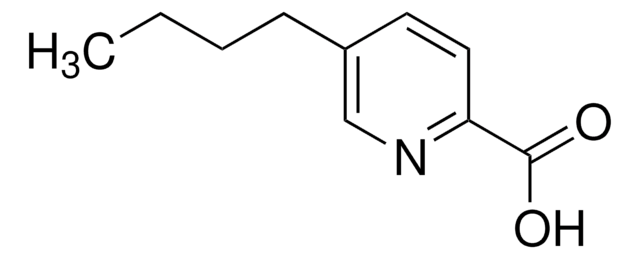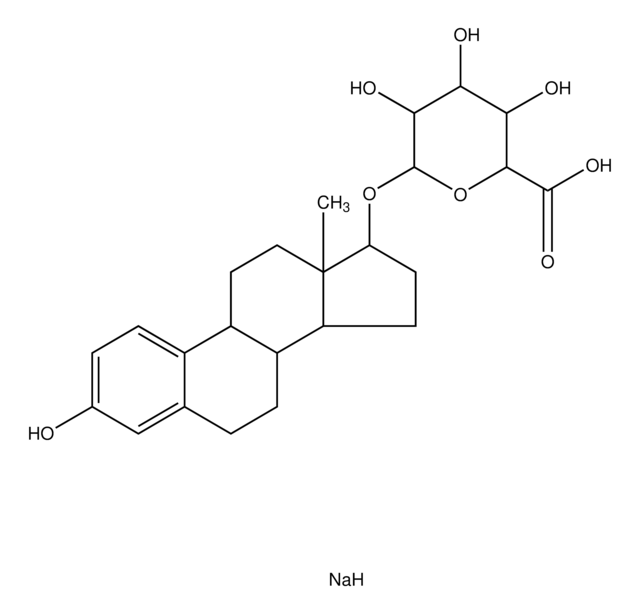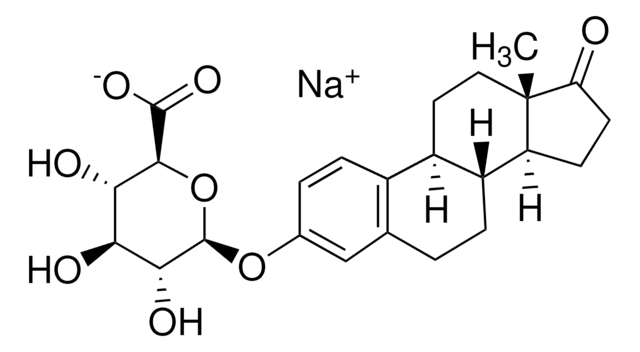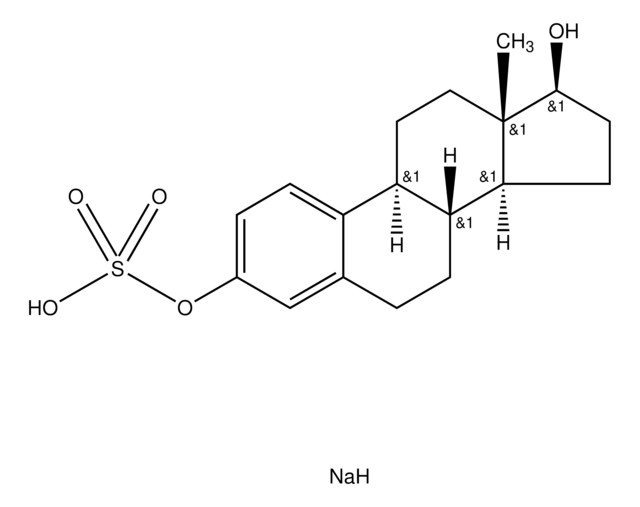F6513
Fusaric acid
from Gibberella fujikuroi
Synonym(s):
5-Butylpicolinic acid, 5-Butylpyridine-2-carboxylic acid
About This Item
Recommended Products
biological source
Gibberella fujikuroi
Quality Level
assay
≥98% (TLC)
form
powder
mp
95-97 °C
solubility
ethanol: 49.00-51.00 mg/mL, clear, colorless to faintly yellow
antibiotic activity spectrum
Gram-positive bacteria
mode of action
enzyme | inhibits
storage temp.
−20°C
SMILES string
CCCCc1ccc(nc1)C(O)=O
Looking for similar products? Visit Product Comparison Guide
General description
Biochem/physiol Actions
Features and Benefits
signalword
Warning
hcodes
Hazard Classifications
Acute Tox. 4 Oral
Storage Class
11 - Combustible Solids
wgk_germany
WGK 3
flash_point_f
Not applicable
flash_point_c
Not applicable
ppe
dust mask type N95 (US), Eyeshields, Faceshields, Gloves
Choose from one of the most recent versions:
Certificates of Analysis (COA)
Don't see the Right Version?
If you require a particular version, you can look up a specific certificate by the Lot or Batch number.
Already Own This Product?
Find documentation for the products that you have recently purchased in the Document Library.
Customers Also Viewed
Our team of scientists has experience in all areas of research including Life Science, Material Science, Chemical Synthesis, Chromatography, Analytical and many others.
Contact Technical Service











